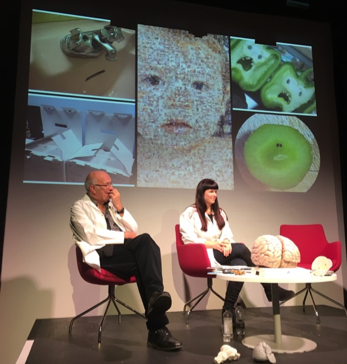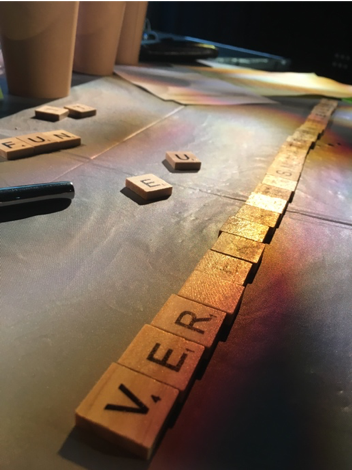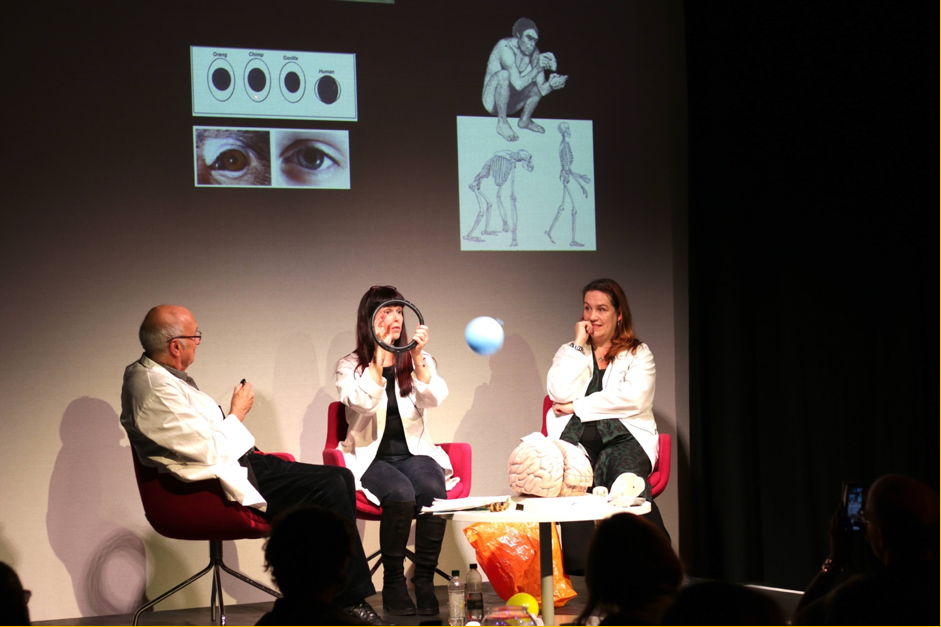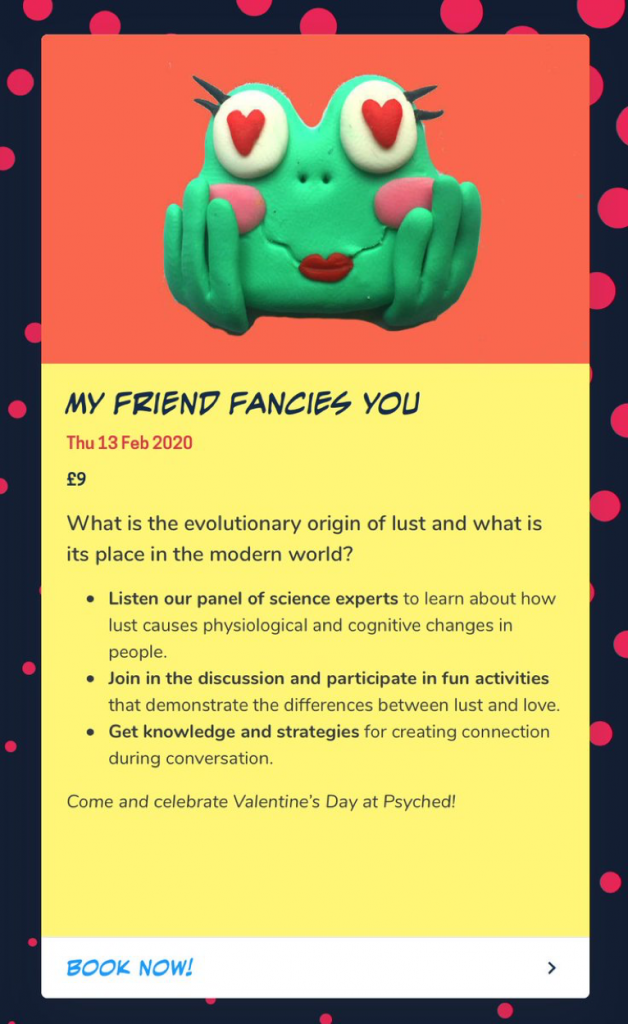‘Lovely cabaret style set-up and relaxed mood. Excellent quality of content.’
For its public engagement event on the origin of human language, the ‘Me, Human’ team chose an intriguing yet straightforward title: ‘Blah Blah Blah’. This leaves some room for interpretation. So, what was it all about?
On stage, Dr. Gillian Forrester, Dr. Natasha Kirkham, and Dr. Simon Green shared some fun facts about the development of human language, both at the scale of evolution (e.g. from chimpanzees to humans), and at the scale of a human life (e.g. from babies to the elderly). Let’s start with an example of our extraordinary language skills… Can you understand this?
The middle-aged lady who was wearing a long red scarf was eating a chocolate ice-cream in front of the shop that was very busy and situated in the main street, because it was Christmas and she liked the squared bubbly vibes of the end-of-the-year celebrations.
Weird and long sentence? Maybe, but it is still plain English. The capacity to generate an infinite number of sentences, expressing various events in the past, present and future, is one of the unique characteristics of human language. Although other species, such as chimpanzees, use vocalisations to share information about specific things, such as food or predators, their language does not seem to have generative properties. Most importantly, their language is not necessarily voluntary: they cannot always inhibit their screams even if there is no one around. Imagine if you were shouting ‘chocolate!’ every time you saw a chocolate bar, even when you are alone in the house…
But since we share 98% of our genes with chimpanzees, we still have a lot in common. Tool use, for example. Chimps can do crazy things such as cracking nuts with stones. Over the course of human history, multiple tools have been used to transform our natural environment (e.g. lighting up a fire), process food and create necessities (e.g. clothes). Fine motor skills, such as the ones used to manipulate tools, actually recruit the same areas of the brain as language. Have you ever found yourself sticking your tongue out as you were trying to put a thread into a needle? Well, that’s it. As humans evolved to use tools more and more frequently, it became useful to not only use gestures but also oral language to communicate. This way, hands could be kept free for manual work. The development of language skills occurred in parallel with changes in the configuration of the mouth and of the larynx, as well as with the adoption of a bipedal posture.
‘Excellent knowledgeable presenters. Fun vibe, not too heavy.’
One of the disadvantages of being bidpedals is that human hips are relatively narrow – and are brain-body ratio is proportionately larger than other primates. Although the brain is folded like a little nut within the cranium, a baby’s head is still relatively big relative to the size of the cervix. Mothers, you know that… When babies are born, they are still quite early in their development. They are dependent on other people’s help. Babies need eye contact to communicate. Being progressively helped by adults’ scaffolding, they use and understand pointing to share their attention to external objects. They learn to be aware of their facial expressions and to progressively shape their vocalisations in a specific language. Until 6 months of age, babies are not yet ‘tuned it’ to any specific language. Then, they get accustomed to the specific sounds and boundaries of their native language. Learning where words start and end in a given language actually requires quite a lot of expertise. A great deal of statistical learning occurs here – with experience, children compare different sentences and learn that some words and sounds can, or cannot follow each other. ‘This is a pretty baby’. You could understand: ‘this is a prettyba by’, but this is not very frequent, is it? The importance of segmentation is quite obvious when we hear a foreign language. When hearing people speaking another language, does it seem to you to be like an endless sentence, or just a blurry ‘BlahBlahBlah’? Well, that is it.
Furthermore, as if it was not complex enough, language is multisensory. Most of the time, we establish visual contact with the people we talk to. We see their lips and can follow the movements of their mouth to get more cues if we have difficulties to hear what they say. But what happen when the sound we hear and the lips movements are not congruent? We start to hear funny sounds. Try it by yourself. This shows that we integrate both visual and auditory information when we process language.
The ‘Me, Human’ event was the opportunity to be bewitched by the fantastic skills primates and humans have developed throughout history. From the new-born babies who needs vocalisations to express their needs, to the mature adults who are playing with words with a Scrabble, there is a lot to learn, and to share.
So if you have not been to this event but are interested in attending the next one about lust(!), you can book you ticket here. You can follow the team @Me__Human #MHPsyched.
Written by: Jessica Massonnié





